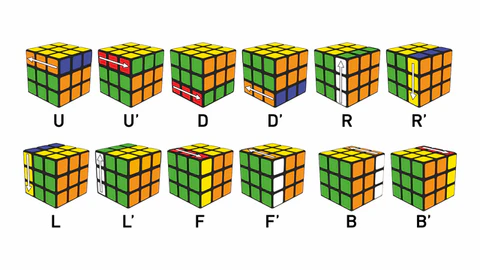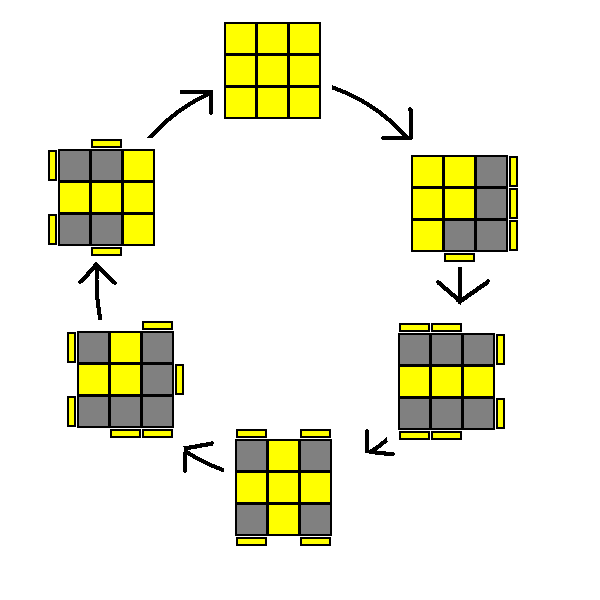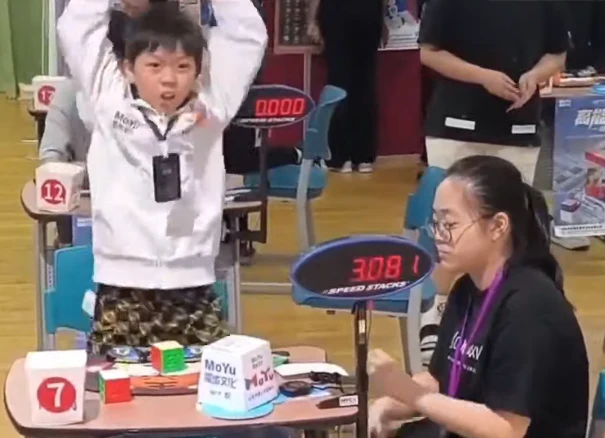Solving the Rubik's Cube follows a methodical approach rather than random twisting. Most solving methods break down the complex puzzle into manageable steps, solving one section at a time without disturbing previously solved pieces. Let's explore the journey from basic beginner methods to advanced speedcubing techniques.
Beginner's Method
The Layer-by-layer Approach
- Begin by forming a cross on one face (typically white). Focus on aligning the edge pieces correctly with their corresponding center pieces.
- Insert corner pieces to complete the first layer. Common algorithm: R' D' R D (repeated as needed). This completes 1/3 of the cube
- Position and orient the middle layer edge pieces. Right algorithm: U R U' R' U' F' U F. Left algorithm: U' L' U L U F U' F'
- Form a cross on the last face (typically yellow). Algorithm: F R U R' U' F'
- Position the corners correctly without concern for orientation. Algorithm: R U R' U R U2 R'
- Move corners to their correct positions. Algorithm: U R U' L' U R' U' L/li>
- Complete the cube by positioning the final edges. Algorithm: R2 U F B' R2 F' B U R2

Intermediate Methods
CFOP Method (Fridrich Method)
The most popular speedcubing method includes:
- Cross: Similar to the beginner method.
- F2L (First Two Layers):Solving the first two layers simultaneously.
- OLL (Orient Last Layer): Orienting all pieces of the last layer in one step (21 algorithms).
- PLL (Permute Last Layer): Arranging all pieces in their correct positions (21 algorithms).
Unlike simpler puzzles, the Rubik's Cube doesn't rely on detachable pieces. Instead, it uses a complex system of rounded extensions and internal tracks that allow pieces to slide past each other during rotation. This clever design enables the seemingly magical transformations while keeping all 26 visible pieces connected.
Roux Method
An alternative approach focusing on block-building:
- Build two 1x2x3 blocks on the left and right sides
- Solve the upper corners and orient edges
- Complete the cube with M-slice moves

Advanced Methods
Elite speedcubers employ sophisticated strategies:
Look-ahead— Cubers plan several moves in advance while executing current algorithms and eliminate pauses between steps.
Finger Tricks— They use specialized finger movements for maximum turning efficiency and allow for extremely fast algorithm execution.
Algorithm Optimization— They customize algorithms for specific cases and reducing move count.
Advanced F2L Techniques— They use empty slots strategically and handle difficult cases with specialized algorithms.
Breaking Records
World-class speedcubers combine:
- Extensive algorithm memorization (often 100+ algorithms).
- Pattern recognition developed through thousands of practice solves.
- Cube hardware optimized for speed.
- Turning speeds exceeding 10 turns per second.
The current world record for a single 3x3x3 Rubik's Cube solve stands at 3.08 seconds, achieved by Yiheng Wang in 2025 — a testament to how far solving techniques have evolved from the original methods that took minutes or even hours to complete.
